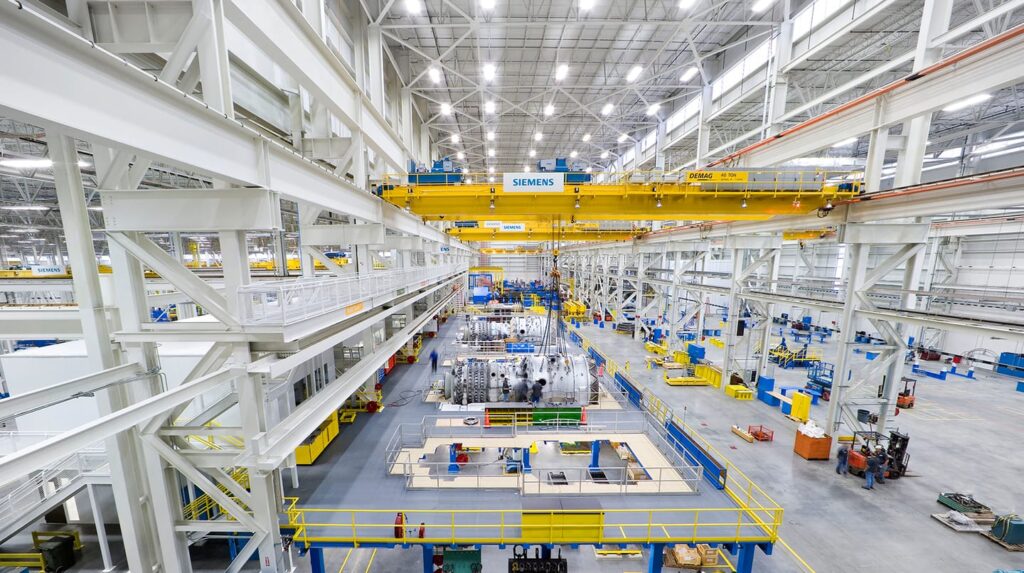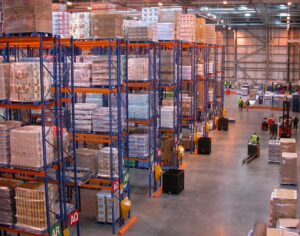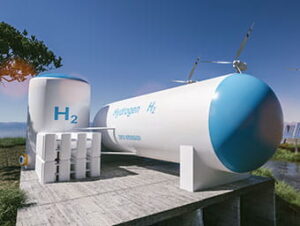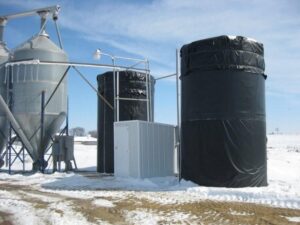The Versatile Applications of Underfloor Heating Systems in the Industry
Underfloor heating systems have become a highly versatile solution for a wide range of industrial applications. With their ability to distribute heat efficiently and evenly, these systems offer numerous benefits across various industries. In this article, we will explore the diverse uses of underfloor heating systems in industrial settings, highlighting their impact on manufacturing facilities, warehouses, the food processing industry, greenhouses, automotive manufacturing, data centers, pharmaceutical and laboratory settings, sports facilities, retail spaces, and the hospitality industry.
Let’s Begin!
1. Manufacturing Facilities
Underfloor heating systems are extensively utilized in manufacturing facilities, where maintaining consistent temperatures is crucial. These systems ensure optimal working conditions by regulating the temperature of production areas, storage spaces, and assembly lines. By providing even heat distribution, underfloor heating systems contribute to a comfortable working environment while improving productivity and employee well-being. Additionally, these systems help prevent the formation of cold spots and ensure the efficient operation of machinery and equipment. Overall, underfloor heating systems play a vital role in enhancing the efficiency and effectiveness of manufacturing processes, leading to improved product quality and reduced operational costs.
2. Warehouses and Distribution
Underfloor heating systems find significant use in warehouses and distribution centers, where maintaining appropriate temperatures is essential for the preservation of goods. By evenly distributing heat, these systems protect temperature-sensitive items from freezing temperatures, preventing damage and ensuring product quality. Moreover, underfloor heating systems contribute to energy efficiency by minimizing heat loss through the floor. This results in cost savings for businesses while allowing them to maintain optimal storage conditions for various products, including perishable goods.
3. Food Processing Industry
The food processing industry relies heavily on underfloor heating systems to maintain precise temperature control in various operational areas. These systems are used in cold rooms, processing areas, and storage facilities to ensure the freshness and quality of perishable items. By providing consistent heating, underfloor systems prevent temperature fluctuations that could compromise food safety and contribute to spoilage. Moreover, underfloor heating systems facilitate hygienic conditions by minimizing the presence of cold spots where bacteria can thrive. This leads to improved food preservation and extends the shelf life of products. With their ability to meet stringent industry regulations and support high-quality food processing, underfloor heating systems have become an indispensable asset in the food industry.
4. Greenhouses and Nurseries
Underfloor heating systems offer significant advantages in greenhouse and nursery environments, where optimal growing conditions are crucial. By providing heat from below, these systems promote healthy plant growth and prevent frost damage. The even distribution of heat throughout the floor ensures that plants receive consistent warmth, essential for their development. Underfloor heating systems also contribute to a more controlled environment, enabling growers to cultivate plants year-round regardless of external weather conditions. Additionally, these systems contribute to energy efficiency by minimizing heat loss and reducing heating costs. The versatility and effectiveness of underfloor heating systems make them a preferred choice for greenhouse and nursery operators, allowing them to optimize plant growth and productivity.
5. Automotive Manufacturing
Underfloor heating systems play a vital role in the automotive manufacturing process. These systems are utilized to ensure proper curing of adhesives and coatings, which are critical for the quality and durability of vehicles. By providing controlled and evenly distributed heat, underfloor systems contribute to the effective bonding of components, resulting in stronger and more reliable finished products. Additionally, underfloor heating systems enhance worker comfort by maintaining a pleasant working temperature in manufacturing facilities. This, in turn, leads to increased productivity and improved employee satisfaction. The use of underfloor heating systems in automotive manufacturing facilitates efficient production processes and contributes to the overall quality of vehicles.
adhesives and coatings, which are critical for the quality and durability of vehicles. By providing controlled and evenly distributed heat, underfloor systems contribute to the effective bonding of components, resulting in stronger and more reliable finished products. Additionally, underfloor heating systems enhance worker comfort by maintaining a pleasant working temperature in manufacturing facilities. This, in turn, leads to increased productivity and improved employee satisfaction. The use of underfloor heating systems in automotive manufacturing facilitates efficient production processes and contributes to the overall quality of vehicles.
6. Data Centers
Data centers generate substantial heat due to the high density of computer equipment. Underfloor heating systems can be utilized to remove  excess heat, maintaining a stable operating temperature and preventing equipment malfunctions. By effectively managing heat distribution, these systems contribute to the overall cooling efficiency of data centers, reducing the risk of overheating and equipment failures. Furthermore, underfloor heating systems help optimize energy consumption by utilizing the excess heat generated in the data center for heating purposes, resulting in energy savings and cost reduction. The implementation of underfloor heating systems in data centers ensures reliable and efficient operations while enhancing equipment longevity.
excess heat, maintaining a stable operating temperature and preventing equipment malfunctions. By effectively managing heat distribution, these systems contribute to the overall cooling efficiency of data centers, reducing the risk of overheating and equipment failures. Furthermore, underfloor heating systems help optimize energy consumption by utilizing the excess heat generated in the data center for heating purposes, resulting in energy savings and cost reduction. The implementation of underfloor heating systems in data centers ensures reliable and efficient operations while enhancing equipment longevity.
7. Pharmaceutical and Laboratory Settings
Underfloor heating systems are critical in pharmaceutical and laboratory settings where precise temperature control is essential. These systems maintain stable temperatures in cleanrooms, research laboratories, and storage areas, ensuring the integrity of sensitive materials and samples. By providing uniform heat distribution, underfloor systems eliminate temperature variations that could compromise the accuracy and reliability of experiments and testing processes. Additionally, underfloor heating systems contribute to the overall cleanliness and hygiene of pharmaceutical and laboratory environments by minimizing air circulation, which reduces the risk of contamination. The use of underfloor heating systems in these settings supports stringent regulatoryrequirements and ensures the optimal conditions for research, development, and storage of pharmaceutical products and scientific samples.
8. Sports Facilities
Underfloor heating systems are widely employed in sports facilities, particularly in ice rinks and indoor arenas. These systems play a crucial role in maintaining the integrity and quality of ice surfaces by preventing ice from melting. By providing consistent and controlled heating from below, underfloor systems ensure optimal playing conditions for athletes and enhance the safety and enjoyment of spectators. Moreover, underfloor heating systems contribute to energy efficiency by reducing the need for additional heating equipment and minimizing heat loss. The use of underfloor heating systems in sports facilities creates a comfortable and conducive environment for various sporting activities and events.
9. Retail Spaces
Underfloor heating systems are increasingly being incorporated into retail spaces to enhance customer experience and satisfaction. Furthermore these systems provide a comfortable shopping environment by evenly distributing heat throughout the store. The absence of visible radiators or heating equipment allows for more flexible store layout and design. Additionally, underfloor heating systems contribute to energy efficiency by minimizing heat loss through the floor. This results in cost savings for retailers while creating a warm and inviting atmosphere for shoppers. The use of underfloor heating systems in retail spaces has become a popular choice to optimize comfort, and operational efficiency.
10. Hotels and Hospitality Industry
In the hospitality industry, underfloor heating systems are utilized to create a luxurious and comfortable atmosphere for guests. These systems are commonly installed in lobbies, bathrooms, and spa areas, offering warmth and comfort during colder months. By providing a consistent and pleasant heating experience, underfloor systems enhance the overall guest experience and satisfaction. Additionally, underfloor heating systems contribute to energy efficiency by minimizing heat loss and reducing heating costs for hotel operators. The incorporation of underfloor heating systems in hotels and hospitality establishments adds a touch of luxury. In addition it ensures a cozy environment for guests to enjoy their stay.
Conclusion
Underfloor heating systems have revolutionized the way industries address their heating needs. Whether it’s maintaining optimal temperatures in manufacturing facilities, preserving perishable goods, or promoting plant growth in greenhouses, these systems provide efficient and reliable heating solutions. From warehouses to data centers, underfloor heating systems continue to prove their versatility and effectiveness across a wide range of industrial sectors. By enhancing productivity, comfort, and overall operational efficiency, underfloor heating systems have become an invaluable asset to industries, contributing to their success and growth.







